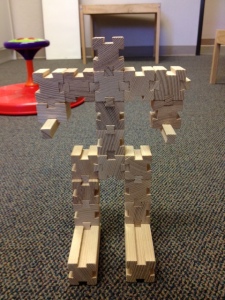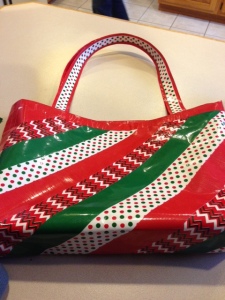What you need: A tennis ball, scissors or knife, marker, small manipulatives such as paperclips, pennies, beads, pom poms, etc.
Steps:
- A whole or slit needs to be cut across the ball first for the mouth. The adult should do this possibly before beginning the activity with the child. This can be difficult to do so be fully away of what direction the knife it going and how you are pushing down on it. I prefer to rotate the knife back and forth to make a puncture first. It’s then easier to put the knife into the ball and saw back and forth to make a mouth. It’s ok if it’s not straight, it will still work the same. The wider you make the mouth, the easier it will be for the child to open it. The smaller the slit the more they will have to squeeze and the difficulty increases.
- Let the child draw a face on the ball with a marker. They can get creative and make it into an animal instead of a person as well by drawing on ears, whiskers, etc.
- Have them pick different items to place in the ball. Pennies, buttons, paperclips, etc. are all going to be easier and they won’t have to squeeze open the ball as much with their other hand to place these in. Items such as pom poms, beads, and marbles will increase the difficulty level once they’ve mastered the easier manipulatives.
What this works on:
- Fine motor strength: squeezing the ball for an extended amount of time to place all the items in can be challenging and build on fine motor strength and endurance.
- Bilateral hand use: They have to use two hands to place the pieces in. The ball is round so they have to pick it up to squeeze and then use their other hand to place the items into the ball.
- Pincer grasp: Picking up items off the floor and placing them into a smaller hole can encourage pincer grasp.
- Imaginative play: They can pretend the ball is eating and make sounds or open and close its mouth to make it talk. It’s great to work on your child’s imagination if this is an area that they have trouble with.
Adapting it:
- If they won’t use two hands to place the items in. Do hand over hand to help them hold the tennis ball, and allow them to place the items in. You’ll find you can release after awhile when they begin to get it.
- Have them take items out of the ball instead. This still encourages them to squeeze the ball or to isolate their fingers and stick them inside. You may have to place something of high interest into the ball to work on this.
Or, if you want to buy a fabulous version, with fun games and instructions included visit Therapy Fun Zone! (Check out their other fun products and ideas as well – this site has so much to offer) And, here are a ton of blogs giving you awesome ideas for how to use this toy – the best part about this version is that you can get them wet and messy – our kids have loved playing with them in shaving cream and other messy materials!






















